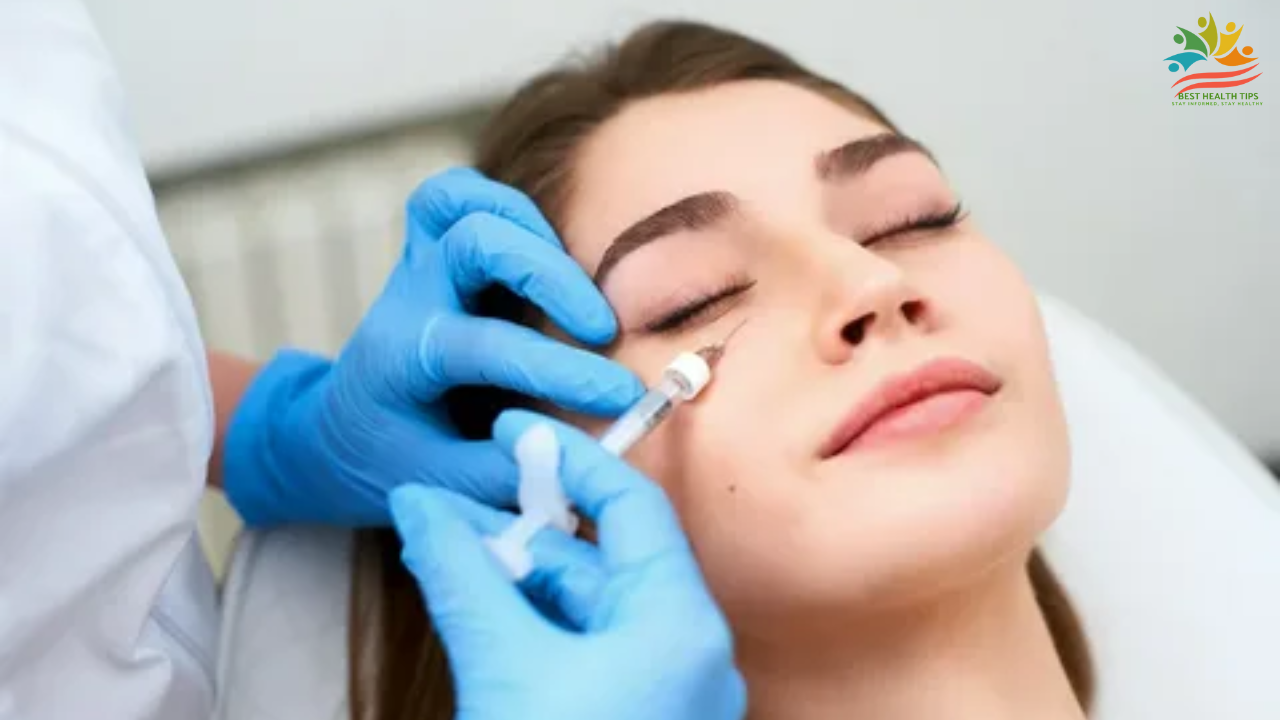Introduction
Pictures of skin after cryosurgery one of the most frequently carried out dermatological procedures includes abnormal or damaged skin tissues frozen with liquid nitrogen or any cryogenic substance. The procedure is much less invasive compared to other ones, which could be applied for warts and moles, precancerous lesions, as well as to certain types of skin cancers. What your skin will look like after cryosurgery is one of the integral parts of care and healing.
What is Cryosurgery?

The use of cryosurgery is when very cold temperatures are applied to the cells to destroy them, thus allowing the tissue to die, but healthy skin will regenerate. This service is provided by dermatologists as they perform it while being safe and effective, and the patients recover quite fast. Conditions treated using cryosurgery include: Warts and skin tags, actinic keratosis. These are widespread small cancers of the skin, including basal cell carcinoma.
- Warts and skin tags
- Actinic keratosis
- Sundamaged skin lesions
- Scarring to the skin due to sun exposure
The Immediate Aftermath
Recall your fingers in the snow after making snowballs without gloves? The treated area will look somewhat similar, but more intensely reactive. The skin will appear white and hard to the touch- almost like a small patch of frozen ground in winter.
Normal Healing Stages
The blister formed might turn darkish and crusty- nothing to be worried about. It’s as normal as when the leaves start turning colors during autumn. It may look worse before it gets any better; this is just part of the process.
Healing Progression
By now, your skin is working overtime in its repair shop. The dark scab might start to loosen around the edges – think of it as your skin’s way of removing its Band-Aid when it’s ready.
What is the most common error in cryosurgery?
The most common error in cryosurgery is inadequate depth or duration of freezing, which can result in incomplete treatment. This error may occur due to a lack of precision in applying the cryogen, particularly when targeting deeper or thicker lesions. As a result, residual abnormal tissue may remain, requiring additional treatment sessions.
Insufficient Knowledge of Anatomy
Misjudging the location or depth of the lesion, especially in delicate areas (e.g., near nerves), can lead to unintended tissue damage.
Inappropriate Patient Selection
Performing cryosurgery on patients with conditions like Raynaud’s disease, cold intolerance, or poor wound healing can increase risks.
Improper Use of Cryogens
Incorrect storage or handling of liquid nitrogen or other cryogenic agents can reduce their effectiveness.
What Does Skin Look Like After Cryosurgery?

PostTreatment Appearance
Redness and Swelling: The day of treatment usually presents the area as red, slightly swollen for a few days after treatment because of the inflammation.
White Frosting: The skin may appear white because of the freezing effect from liquid nitrogen. This frost will resolve.
After a Few Hours
Blisters: It has some little blisters, which are either clear or have yellowish liquid. This happens because the body starts healing the affected tissue.
Tender to Touch: It may also be sensitive to the touch and sore.
The Following Days
Scabbing: As the dermis begins healing, the area of the skin turns lighter and develops into a scab.
Sloughing of the eschar. This can sometimes leave the skin underneath pink or lighter than the surrounding area.
The Late Result
Color changes: Again, there might be some discoloration or hypopigmentation based on the depth of treatment. These often resolve spontaneously.
Texture: The skin is typically smoother and healthier when healed.
Identifying Normal vs. Abnormal Healing
Let’s talk about what’s normal and what’s not – because let’s face it, sometimes it’s hard to tell!
Signs of Proper Healing
Proper healing looks like a well-orchestrated dance: first the redness, then the blister, followed by scabbing, and finally new skin. The area should gradually shrink and become less noticeable, like a puddle slowly evaporating in the sun.
Warning Signs to Watch
Just as a smoke detector warns you of trouble, your skin has its own warning signs. Watch out for spreading redness, unusual warmth, increasing pain after the first few days, or any yellow/green discharge. These are your skin’s way of waving a red flag.
Long-term Skin Appearance
In the long run, most people end up with skin that’s either slightly lighter or slightly darker than the surrounding area. Think of it as your skin’s signature mark – a reminder of its healing journey. Over time, this difference usually becomes less noticeable, like an old photograph gradually fading.
Images of Skin After Cryosurgery
Images can prepare one to understand recovery. Here’s what you may see:
Day 1: Red and slightly swollen
Days 23: Blistering begins to develop yellowish appearance
Days 47: Scabbing starts and it gets quite crusty color is actually darker
Two weeks later. Scabs begin peeling off. Appearance will be quite pink.
At three to four weeks a normal color again
All cases vary with how deep the surgery was, along with the actual problem being treated in the skin as well.
How to Care for Skin After Cryosurgery
Proper aftercare posttreatment is followed to heal faster with fewer complications. Follow the guidelines given below for proper care.
1. Cleanliness Maintain it by cleaning the area using a mild soap and water without scrubbing it.
2. Avoid Infection Use antibiotic ointment as advised by your doctor.
Wrap it up in a clean bandage in case of leakage from it.
3. No picking
Do not try to scratch off the scab as this may lead to scar tissue.
4. Moisturize
Apply fragrancefree, gentle moisturizer on your skin to help soothe during healing.
5. Sun Protection Apply sunscreen to prevent discoloration or sun damage on the treated skin.
6. FollowUp Follow up with the doctor if necessary to check up on the area’s healing.
Side Effects and Risks
Possible Side Effects and Risks There are a few side effects, though rare: Cryosurgery is safe mostly. However, a few possible side effects are:
- Temporary pain or stinging while the treatment is performed
- Redness, swelling, or blistering
- Hypopigmentation or hyperpigmentation
- Scarbing in deep treatments occasionally
Most patients can undergo cryosurgery without any complications. However, those patients with severely sensitive skin and other poor circulatory conditions must consult their dermatologist first before going for cryosurgery.
| Year | Milestone/Discovery |
|---|---|
| 1845 | First recorded use of cold temperatures to treat skin conditions by Dr. James Arnott. |
| 1899 | Liquid oxygen introduced as a cooling agent for cryotherapy in medical treatments. |
| 1907 | Liquid air and carbon dioxide used for treating skin lesions, marking advances in cryosurgery. |
| 1961 | Dr. Irving Cooper pioneers the use of liquid nitrogen in cryosurgery for neurological applications. |
| 1970s | Cryosurgery becomes widely adopted for treating skin conditions, including warts and lesions. |
| 1990s | Advances in cryogenic equipment improve precision and safety in dermatological cryosurgery. |
| 2000s | Cryosurgery recognized as a minimally invasive alternative for treating precancerous skin lesions. |
| 2020 | Research emphasizes cryosurgery’s role in cosmetic dermatology, focusing on recovery and outcomes. |
FAQs
1.Is it normal for the treated area to look worse after a few days?
Yes, the appearance often gets more dramatic before it improves – this is part of the normal healing process.
2.Can I speed up the healing process?
While you can’t rush healing, keeping the area clean and protected helps ensure optimal healing conditions.
3.Will my skin color ever return to normal?
Most people experience some permanent color change in the treated area, but it typically becomes less noticeable over time.
Conclusion
Cryosurgery is very effective for all kinds of skin conditions. The results appear quickly, and it does not involve much downtime. Knowing what to expect your skin to look like after the treatment and how best to care for it will lead to a very good recovery with the best outcomes. Always do as your dermatologist advises you and report unusual symptoms.
Read more about beauty&skincare and other categories at Best Health Tipss.


